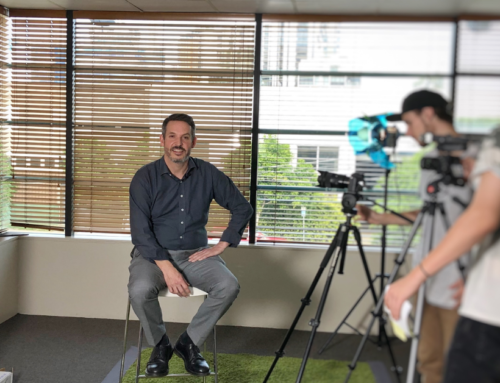“If I had asked people what they wanted, they would have said ‘faster horses’.” – Henry Ford
The notion that ‘customers don’t know what they want’ is an idea derived from this quote. However, unfortunately the statement it is too frequently misquoted and misunderstood. Henry Ford never actually expressed those famous words. However, if he had, the statement is in fact correct- people find it difficult to imagine and articulate something truly innovative.
A problem arises when this quote is used as ammunition against gathering customer insights and customer centricity. Equally harmful to the case for customer insights, are organisations that believe they have embraced their customers, yet are actually unsuccessful or ineffective in doing so.
We see 3 common misconceptions around gathering and harnessing customer insights. Do you recognise any of these in your organisation?
1) You believe customers are unable to express what they need
“We are customer-focused, but customers won’t tell us anything we don’t already know.”
You are partially correct. Most customers are eager to express their opinion about what they want, and many are happy to give you their feedback. However, these customer ‘wishes’ are merely raw data points, and on their own they provide minimal value to your innovation efforts.
Remember that customers struggle to accurately and genuinely articulate what they actually value. Therefore, asking customers directly for their wishes and what they believe they value is a flawed approach to understanding your customers.
Many businesses lack an understanding of the fundamental difference between customer requirements and customer insights. We understand that finding effective tools and approaches to seeking insights can be challenging. The most important step you can take as an organisation is to move away from gathering a customer ‘wish list’ and move towards engaging your customers in a way that is different to your regular business-as-usual (BAU) interactions.
By participating in frequent and focused human-to-human conversations you will begin to uncover knowledge that is unobtainable through traditional feedback or surveys. Methods such as qualitative research are especially effective in helping you to truly understand customers’ drivers, wishes, pains and what gets them out of bed in the morning.
To clarify the difference between requirements and insights
- Requirements are product or service specific details allowing you to improve an imaginable solution.
- Customer insights are knowledge, or deep truths, about the customers themselves, and aspects that will make a significant difference to their lives if delivered according to these insights /OR/ how you can create solutions to complement their lives.
Keep in mind that these interactions must follow a well-designed, structured, yet organic process revolving around your participant and guided by your leading question. Searching for insights is a team activity, and insights will emerge in the gaps between researcher perspectives and across your findings through rigorous synthesis. It is essential that you are open to letting the participant take you on their journey, and are willing to listen to contradictory and potentially unfavourable feedback. Be prepared to hear things that may make you uncomfortable and to take responsibility for applying your newfound knowledge.
You may say you have already undertaken some customer research, which leads us to point 2.
2) You believe customer insights provide minimal value to your organisation
“We speak to our customer’s all the time! We welcome their feedback, yet we can’t seem to get ahead.”
It is a well-known concept that customers find it hard to ‘analyse’ themselves and give an accurate recollection of their own preferences, values and loyalty to a solution, especially if they are unable to imagine what it could be. Thus, traditional customer engagement methods are inadequate for this particular (insight gathering) purpose.
In contrast, Customer-based Design is an approach created to harness the untapped value of empathising with each of your customer and stakeholder groups. The gold lies in gaining a deep appreciation of what they value, not what they want or literally tell you they value. Customer insights emerge from the space between your existing knowledge and new findings, and through ongoing and frequent conversations with your customers. A one-off research event is insufficient as a foundation for knowing your customers and what they stand for. Customer groups and their individual needs evolve over time, and so must you, by regularly checking in with them.
These insights will only make a difference if you have gathered enough knowledge to fully comprehend how you can make a significant difference in their eyes, or else you are just back to gathering shallow requirements.
Customer insights lose their value if they are seen as a tool for product and service refinement or applied as an afterthought when as solution has already been formed. On the contrary, insights make the strongest impact when they are positioned as the driver before a project even gets fully off the ground.
In order to find out if your insights are truly meaningful, you must propose a solution the customer will find alluring and worthwhile committing to.
Your organisation may have some of the best people in their field, who have spent years working on ‘alluring’ solutions, as outlined in point 3…
3) You believe innovation generated internally is more valuable than seeking customer input
“The most innovative companies don’t ASK customers – they propose novel and exciting solutions, and we want to be more like them.”
It is quite common to put world-first, fresh innovations on a pedestal, and think that the best solutions can’t come from examining something intangible like an emotional connection to a service or a relationship that already exists.
Invention may come from experiments and imagining fresh solutions, but increasing the value of your offerings in the eyes of your customers is a distinctly different challenge. In other words, invention can lead to a completely novel solution, but it does not mean that your idea adds value to your customers. It may not lead to increased uptake or encourage long-term commitment. By proposing a solution that is not grounded in an up-to date and accurate perception of your customers, you risk investing in a redundant solution. You don’t know the impact it will have on the users, their individual journeys and experiences, unless it is based on awareness of them and their realities. Not only is this understanding important in terms of supporting any inventions, it is a fruitful starting point for innovation, by solving real and worthwhile problems.
This may be controversial, but Henry Ford may have been able to gain invaluable insights that could have set him on the same path to develop what we know as the modern motor vehicle. If he had spent time thoroughly investigating the lives of people who travel, he may have found that the current method of transportation was not meeting their needs. If Henry Ford were to step into his customers’ shoes he may have discovered what his existing and potential customers really value. By having meaningful conversations, starting with curiosity and empathy, he could gain honest insights into customers’ pain and pleasure triggers. He may have found that customers seek convenience, comfort, reliability or luxury, which a horse cannot offer in the same way. Until the users’ needs had been investigated and understood; motor vehicles could be considered an invention, but not an optimised solution for drivers. It has taken many decades, and additional inventions, for the driving experience to be centred around the driver itself.
Some argue that recent ‘inventions’ adopted in modern cars are once again focusing on what’s possible, and not what customers truly value.
To sum it all up…
The ‘faster horses’ quote attributed to Henry Ford misleads organisations by suggesting that there is no benefit to be gained from speaking to , when wishing to innovate or advance your organisation. We all need to be reminded of the role customers, and how they are both a starting point for increasing your perceived value and a source of innovation. The depth of your insights will depend on the manner in which these interactions are undertaken and how often you speak to your customers.
Customers know exactly what they value. Empathising with them and seeing your organisation as part of their world, are essential parts of innovation. Listening is the first step on a company’s journey towards becoming customer-focused and harvesting these benefits.
Would you like to get started on your customer journey? Would you like a hand with overcoming customer research challenges and pitfalls? Contact us at3rdView Consulting to continue the conversation.



